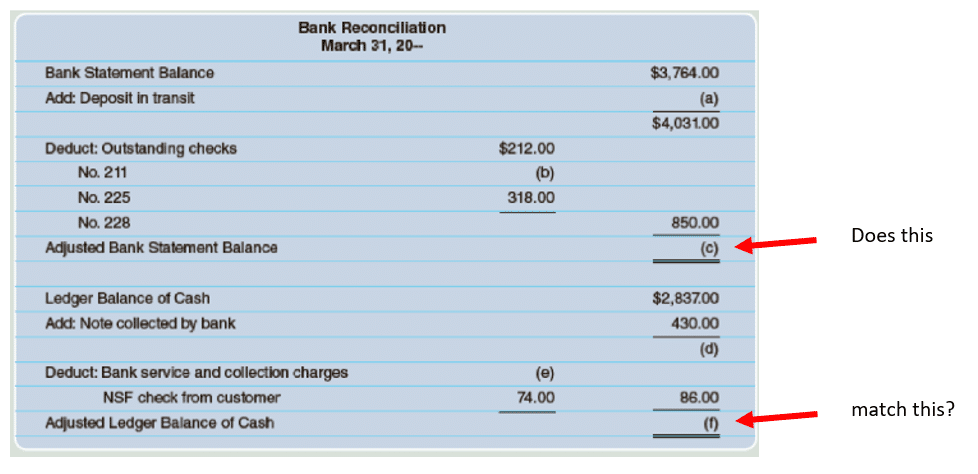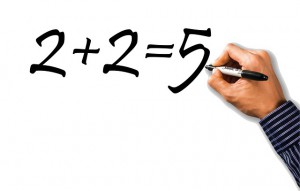Your parents probably have experience reconciling their checkbook by comparing your own written records with their bank statements.
In today’s world, reconciling your checkbook isn’t a common activity for two reasons:
- Paper checks probably only account for a small amount of your total expenses per month
- You probably have an automatic record with your bank’s online services showing how much you paid for anything purchased with a debit card
This does not mean you can skip the account reconciliation though. In fact, the way instant payments and other conveniences work probably make it more important than ever to spend a few minutes per month reconciling your accounts.
What does it mean to reconcile?
In relationships, reconcile means to resolve differences in order to restore friendly relations between two people. You see this in movies when a married couple gets separated and then decides they still want to be married, or when a daughter decides, after being upset with her father for 20 years, that she wants to reconcile their relationship. In relationships, reconciling means to make things right.
In financial terms, reconcile means to compare your personal records with the bank’s records to see if they match. And if they don’t match, you want to discover where the error is and “make it right.” You don’t want to think that you have more money than you do, and you also don’t want to think that you have less money than you do. So the process of reconciling your bank accounts is important.

Reconciling for the 21st Century – Why is it Important?
Today you will still get paper receipts for almost every payment you make in person, and online copies of receipts for every purchase you make online.
There are still two factors that make reconciliation necessary:
Entry Errors at Storefronts

The cheapest and easiest way for stores and restaurants to take credit and debit cards is by using a stand-alone card reader. These readers operate independently from the normal cash register system, meaning your waiter or clerk will need to manually enter your total charge before scanning your card.
You can tell which establishments do this because you will probably get two receipts – one issued by the establishment (listing what you bought and the items’ prices), and one printed by the card reader (usually just listing the total). Since these two items are registered separately, there is a chance that the person entering your total entered the wrong amount. This is usually done accidentally, but it means you pay more or less than you should have paid.
If you look at the two receipts immediately, you will catch the error and the store can make the correction while you are still there by voiding the first transaction and creating a corrected one. However, often the receipts go into the shopping bag and you may not notice the discrepancy until you get home. You can make the correction later by comparing your “original” receipt with your bank statement and bringing both to the establishment to prove the error. Of course, this is only possible if you kept the true receipt listing what you bought, how much you were supposed to pay, and the time stamps on both the receipt and the bank statement showing it was the same transaction.
Transaction Processing Time
When you make a transaction, the establishment you are buying from needs a “middle man” to contact your bank or credit card company to actually transfer money. This is called “Payment Processing”, and there are a few ways it can happen.
If you are working with bigger companies, the payment will usually process immediately – you can see it appear on your credit card transactions or bank statements immediately. However, It is very common for online stores to use bulk payment processing, which means all payments process one or two days after the purchase was made (this can be a lot cheaper for smaller stores, since the payment processors have lower fees for batches). This can also happen with larger in-person stores (such as large grocery chains or gas stations) that may bulk-process orders.
While delays may only have a one or two day waiting period, it can add up if you are checking your bank balance on the fly to figure out how much cash you have. Each small “delayed” transactions can account for huge amounts of overdraft fees if you think you have money in your account but it is really tied up in pending transactions.
The much bigger processing delays can come from anything you might pay with a paper check (such as rent). These only processes after someone physically takes the check to a bank to deposit it, so the processing time is entirely up to whoever you pay. This can also happen with your paycheck – many payroll systems pay only when someone from your company’s payroll department confirms your pay amount, which means when you actually get the cash in your account will differ depending on weekends, holidays, and that person’s workload.
The 10 Minute Reconciliation

Once a month, you should take 10 minutes to reconcile your checking account. Remember this means you are comparing the amount of money you think you have in your account with what the bank says you have in the account. If you keep your receipts, this process will go much faster. Her are four steps to help with your reconciliation task.
- Step 1: Confirm your big purchases match your receipts
- Do this for your 10 biggest purchases of the month, just to make sure there were no errors.
- Step 2: Make sure all your deposits are accounted for
- Check all your paychecks or any other transfers that you have received are properly appearing.
- Step 3: Make sure your payments are accounted for
- Check specifically larger payments, like the week’s grocery trip, or some gifts you bought online – you do not need to be exact.
- Step 4: Record your totals
- Once you have established your true bank balance, record this number in your spreadsheet for future reference. This helps you later determine how your spending is moving from month to month.
Working With Checks
You might not need to write checks often, but there are still some cases where it comes up! Be sure that any checks you write are also included in your reconciliation, even if they have not yet cleared your bank account. When you write a check to your friend Sue, she has to deposit your check into her bank account. Her bank then contacts your bank electronically to make sure you have enough money in your account to transfer into Sue’s account. If you do, then the money is transferred and the check is considered “cleared.” This “clearing” process could take days or weeks depending on how quickly Sue deposited the check and how long it takes the banks to communicate with each other.
A check will always include:
- Your printed name
- Your signature
- The person or company you are paying
- The date you wrote the check
- The amount, written out in words
- The amount, in numbers
- Your signature
- Your account number
- Your routing number (this number is a unique number for your bank, used with your account number to identify your exact bank account)
Checks can also optionally include a memo, which is a note to remind yourself or the person you’re paying why you wrote this check.
Try It!
See if you can identify how to properly fill out a check. In this example, your name is Mark Brookshire, and you are writing a check to City Cable Company on April 18, 2019 for $142, to pay for your March bill. Drag the elements from the right side onto the place on the check where they belong.
Pop Quiz
[qsm quiz=81]
Challenge Questions
- What do you understand by the term account reconciliation?
- Why is it important to do an account reconciliation each month.
- How might a financial advisor help?
